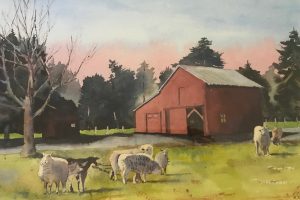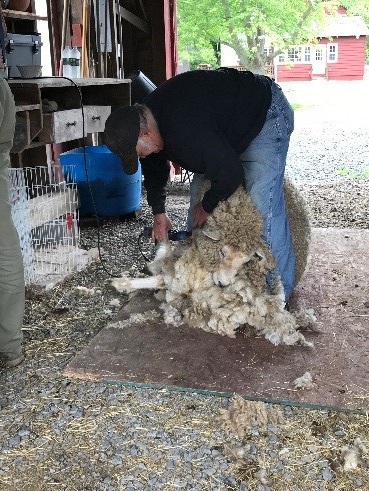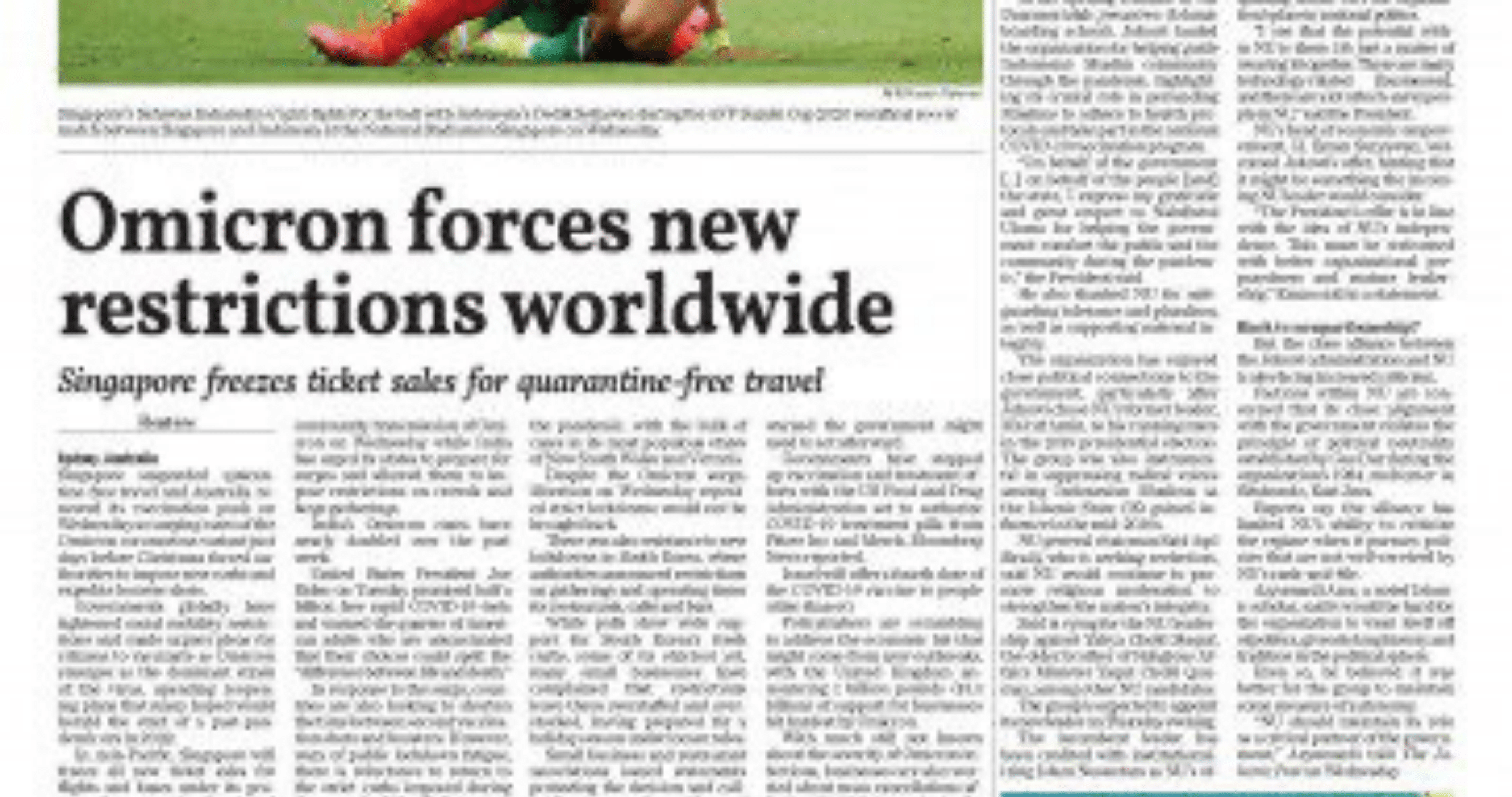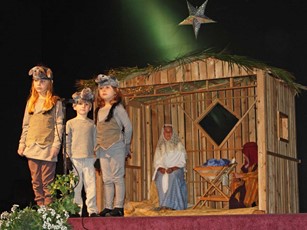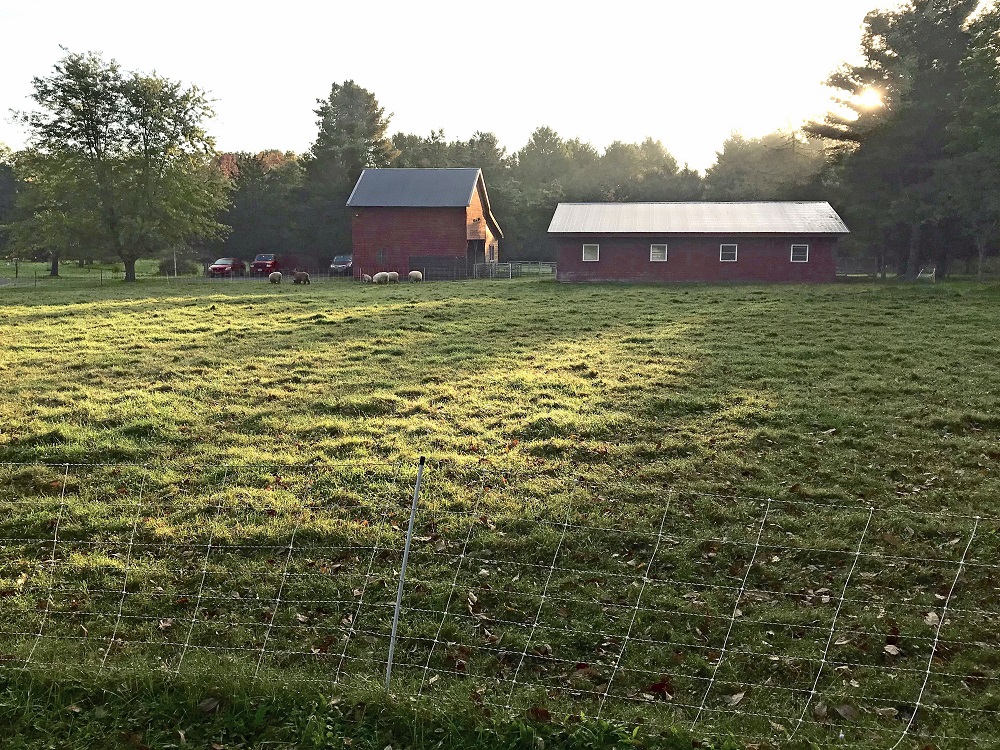Shearing the sheep every spring is not an optional activity here at New Fadum Farm. All of Deborah’s many wool-based activities rely on getting good fleeces from this annual event. Just as important, good animal husbandry requires at least annual shearing. Indeed, annual shearing is even a legal requirement in New York State. Over the years we have experimented with how best to accomplish this important chore. We’ve hired any number of local shearers (who seem not to stay in the business for long) and we have even tried our own hand at shearing. The problem is that hand spinning wool requires a long and uniform staple, so second cuts make a fleece almost useless for hand spinners like Deborah. Shearers who are learning the trade are always cautioned not to nick or cut a sheep. The easiest way to not hurt the animal is to make several smaller cuts, but that that yields wool that Deborah can’t use.
Our solution for the past several decades has been to hire Fred, a real professional, who drives down from Vermont. On each trip he visits several small farms like ours or sometimes one large farm. Fred has been sharing for over 50 years; just yesterday, we heard stories about his participation in an international shearing competition in Canada. Hearing Fred’s stories is part of the mystique and fun of shearing. He travels from farm to farm all over the Northeast and has a wonderful repertoire of rural wisdom that he tells with dry Vermont humor (Q: If a chicken is facing north, which side has the most feathers? A: The outside 🙂). Every year, we organize a small social gathering around the shearing on our farm. One or more of Deborah’s friends, who are also shepherds, come to help and afterwards Deborah serves a hearty stew or chili with home-baked goods. Usually one or more families with young children also come to witness this traditional farm event.
This year, however, we had not hosted any social events since February. What would be a safe way to proceed? Deborah prepared a hearty beef stew and oatmeal-craisin muffins. She invited our two granddaughters and one good friend from church. They were briefed on social distancing and wore face masks. David set plates and chairs outdoors so that each diner would be seven feet from the nearest partner. Deborah set a separate table with the meal (self-serve) and set out liquid hand disinfectant and disinfectant wipes. So much for the advance prep.
The behavioral details of the shearing were more challenging to work out. Fred appreciated all the precautions. He told us his children had been urging him to cut back on his spring shearing to stay safe, but here he was. And he couldn’t wear a mask, because it’s just about impossible to wrestle a bucking sheep while wearing a face mask. I kept my mask on while capturing the animals and releasing each one back to pasture after it was shorn. Deborah moved her skirting table (a table with a mesh top that’s used for the first, rough cleaning of the sheared fleece) to spot on the other side of the barn that was less convenient but much more COVID-19 safe. We were all paying a careful attention to these small safety-related changes in our behavior.
The meal that followed felt awkward, physically and socially. I wound up sitting back from the table and eating stew from my lap to maintain social distancing. During the meal I kept thinking about all that I had learned from Ali’s models in trying to figure out how to manage this event while running a checklist of the six principles for hosting safe work on the farm. These racing thoughts led some odd, stilted exchanges, that, in the end, we just had to chuckle over. For example, upon being questioned Fred was able to confirm without hesitation that he had not engaged in any out of region sheep shearing activity in Bronx, Queens, Brooklyn or Boston.
I knew that one of the six principles for a safe work environment at New Fadum Farm requires some form of confirmed testing for the virus, in this case simple body temperature reports. However, in the end we failed to do this at the sheep shearing. I did try. I wanted to use a non-invasive thermometer like the ones they use in hospitals, doctors’ offices and at airport screening stations. But they were out of stock everywhere within driving distance. I ordered one online so next time we’ll be prepared.
Now I need to figure out a graceful way to ask dinner guests to turn in a temperature reading along with a report on any out of region travel before any meal starts. This may require a good measure of grace and a huge dose of good humor. I am thinking about an engraved invitation that might look like this:
Deborah and David Andersen Cordially Invite you to
A Gracious Meal with Options:
Please select your Social Distancing option: European (two meters), American (six feet), or Technical (one Smoot).
Come prepared to tell an interesting story about your current body temperature.
And spin an appropriate yarn about your out of region travel (in the past 14 days).
I believe that these micro-shifts in our behavior are exactly what is needed for the next several years as we seek to avoid a second wave.
This Story Has a Lesson
Work and social events that used to be routine now require subtle, but important, changes in our behavior to reduce COVID-19 risks. This pandemic is likely to be with us for a while so it’s time to learn how to make these changes. We want to bring this wave of the epidemic to an end and avoid a second one.
